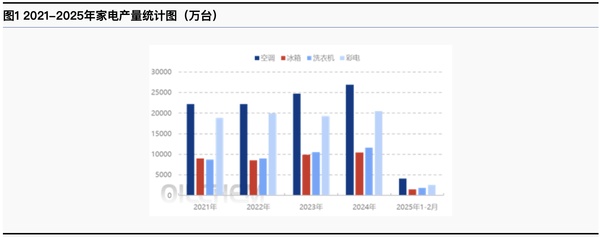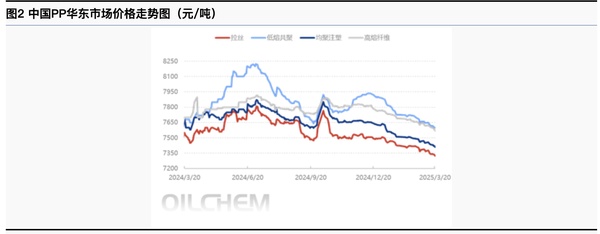Appliance consumption recovery drives up demand for modified polypropylene
[Lead-in] In March 2025, the Special Action Plan for Boosting Consumption was officially released, for the first time clearly stating in a central document the interconnection logic between "stabilizing the stock market and real estate market" and boosting consumption, and introducing several major policies. Among them, the subsidy for trading in old appliances for new ones, as one of the core measures, uses "real money" to drive consumption upgrades and has become a focal point of market attention.

From the perspective of domestic production of home appliances, there is an overall upward trend, mainly driven by domestic trade-in and consumption stimulus policies, as well as support from the export market. In terms of production for January-February, refrigerator production increased by 1.374 million units, a rise of 10%; washing machine production rose by 2.294 million units, an increase of 14.14%; household color TV production grew by 0.333 million units, up by 1.31%; and air conditioner production increased by 3.645 million units, with a growth rate of 9.68%.

Recent changes have been minimal, as geopolitical instability has increased potential supply risks, leading to a rebound in oil prices and a recovery in the overall market sentiment. Fundamentally, multiple facility outages have led to a relatively low utilization rate of polypropylene capacity, with new expansion pressures offset by maintenance, temporarily easing supply pressure. Modified polypropylene enterprises have seen a slight increase in orders, and affected companies have moderately replenished raw materials due to these orders.

As of this week's data, the operating rate of modified PP sample enterprises has slightly increased to 63.67%, up 0.09% from last week, with terminal demand showing a divergent trend. In the new energy vehicle sector, as market penetration increases, the growth rate of demand has slowed down, and intensified competition among automakers has put pressure on the use of modified materials. On the other hand, supported by the "trade-in for new" policy, the demand in the home appliance and daily necessities sectors has remained relatively stable, providing some support to the modified polypropylene market.
In a comprehensive view, although there is an expectation of a relaxation in international oil prices, recent geopolitical benefits have led to a rise in international oil prices from their lows. As concerns over crude oil ease and the fundamental situation improves, polypropylene enters a short-term consolidation pattern under a supply reduction and stable demand scenario. In terms of end-use, while weak demand from the automotive sector exerts some pressure on the market, the stable performance of demand for appliances and daily necessities helps to balance market supply and demand. It is expected that the domestic modified polypropylene market will maintain a relatively stable operation in the short term, with limited price fluctuations.
【Copyright and Disclaimer】The above information is collected and organized by PlastMatch. The copyright belongs to the original author. This article is reprinted for the purpose of providing more information, and it does not imply that PlastMatch endorses the views expressed in the article or guarantees its accuracy. If there are any errors in the source attribution or if your legitimate rights have been infringed, please contact us, and we will promptly correct or remove the content. If other media, websites, or individuals use the aforementioned content, they must clearly indicate the original source and origin of the work and assume legal responsibility on their own.
Most Popular
-

List Released! Mexico Announces 50% Tariff On 1,371 China Product Categories
-

Nissan Cuts Production of New Leaf EV in Half Due to Battery Shortage
-

New Breakthrough in Domestic Adiponitrile! Observing the Rise of China's Nylon Industry Chain from Tianchen Qixiang's Production
-

Dow, Wanhua, Huntsman Intensively Raise Prices! Who Controls the Global MDI Prices?
-

Mexico officially imposes tariffs on 1,400 chinese products, with rates up to 50%






